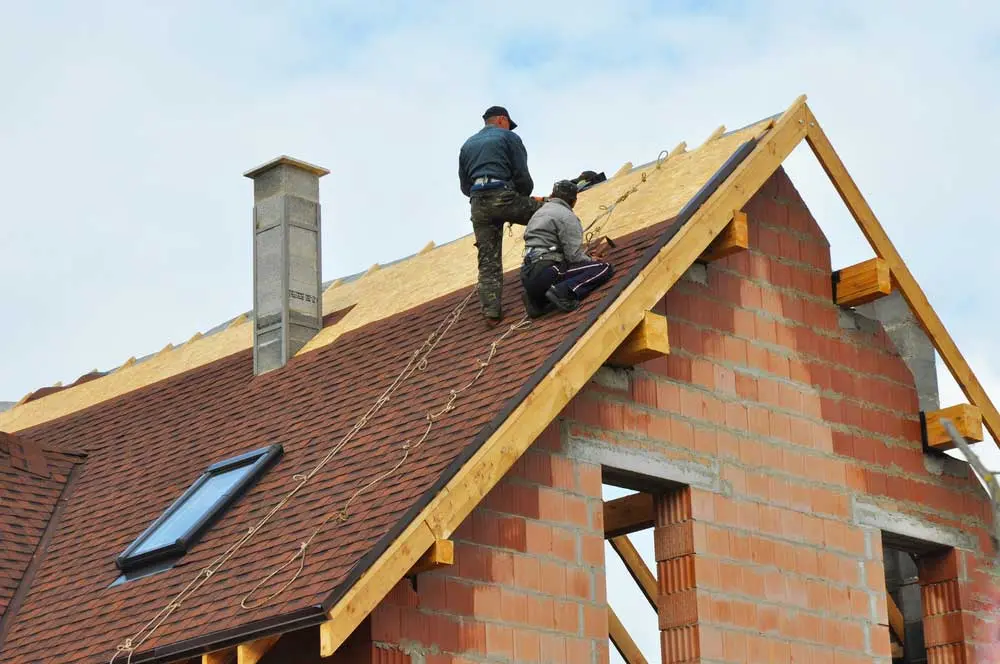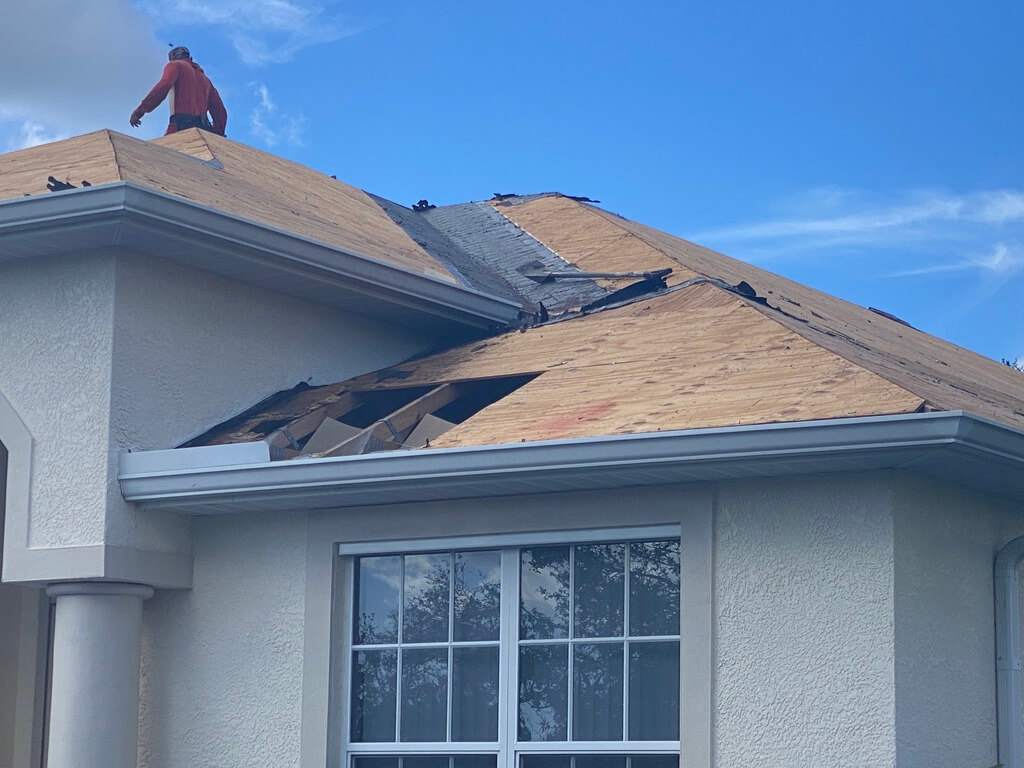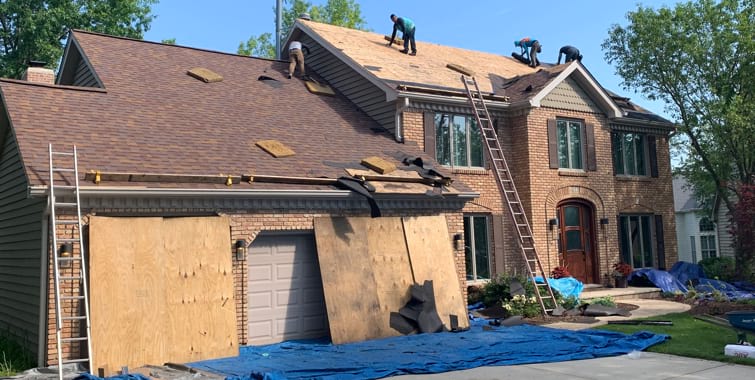A Thorough Review of Roof Covering Substitute Options: Examining the very best Roof Materials for Your Climate and Spending Plan
When considering a roof replacement, recognizing the interplay in between climate conditions and product selection is crucial. Each roofing choice, from cost-effective asphalt roof shingles to resistant metal and traditional clay floor tiles, presents unique benefits and challenges.
Comprehending Environment Impact
Numerous weather conditions can considerably influence both the performance and longevity of roofing materials. Areas with extreme temperatures might require roofing systems that supply remarkable insulation homes to manage indoor temperature levels properly.

It is likewise essential to consider the environmental impact of roof covering products in regard to regional climate. Sustainable alternatives that mirror warmth can aid minimize city warmth island impacts, while energy-efficient materials can add to reduced power usage. By understanding these environment variables, property owners can make informed choices that line up with their particular environmental problems, inevitably enhancing the resilience and performance of their roof investments.
Popular Roof Covering Materials
Selecting the appropriate roof product is crucial for making sure sturdiness, aesthetic appeals, and energy effectiveness in a home. Various roof covering materials are popular amongst property owners, each offering unique advantages matched to different environments and architectural designs.
Asphalt tiles are among one of the most widely made use of options as a result of their affordability, simplicity of installation, and adaptability. Available in a series of designs and colors, they can enhance various home styles. Steel roof, consisting of aluminum and steel, is extremely resilient and can withstand rough weather condition conditions, making it ideal for areas prone to extreme climates. Its reflective residential properties additionally add to energy performance.
Clay and concrete ceramic tiles are preferred for their long life and distinct look, often seen in Mediterranean and Southwestern architecture. They offer exceptional insulation yet can be larger, calling for enhanced frameworks. Slate roof covering is an additional costs selection recognized for its exceptional long life and all-natural charm, though it demands a higher upfront investment and experienced installation.
Expense Contrast of Options
When considering a roofing substitute, the monetary ramifications of different materials play a crucial duty in the decision-making procedure. The expenses connected with roofing products can differ substantially, influenced by factors such as product kind, installation complexity, and local prices variations.
Asphalt tiles, understood for their affordability, typically vary from $90 to $100 per square (100 square feet), making them a cost-effective choice for budget-conscious home owners (Roof Replacement Coffs Harbour). On the other hand, metal roof, while much more sturdy, can cost between $150 to $300 per square, depending upon the type of steel used and the details of the setup
For those looking for aesthetic allure and durability, alternatives like clay or concrete ceramic tiles can vary from $300 to $1,000 per square, showing their costs pricing. In addition, slate roofing can get to upwards of $800 to $1,500 per square, making it one of one of the most expensive materials available.
Eventually, when evaluating roof alternatives, it is important to stabilize upfront expenses with the possible long-term advantages and power cost savings. A thorough cost analysis will certainly ensure property owners make educated choices that line up with their economic capabilities and roof requirements.
Long Life and Maintenance
The longevity and maintenance needs of roof covering materials are crucial elements that can significantly influence a home owner's general financial investment. Various roofing options display varying life expectancies and upkeep needs, which can influence lasting costs and performance.

Clay and concrete ceramic tiles use remarkable long life, frequently surpassing 50 years, however they can be delicate and require cautious maintenance to prevent breaking. Wood shingles and trembles can last around 30 years but are vulnerable to rot and insect damage, requiring vigilant upkeep to keep their honesty.
Inevitably, the selection of roof material need to line up not only with budgetary constraints but additionally with the wanted durability and maintenance level. Understanding these factors can aid home owners make educated decisions that safeguard their investment and make certain the roof covering stays functional and aesthetically pleasing throughout its life-span.
Making Your Choice

Next, review the life expectancy and guarantee associated with each product. Some products might have a greater upfront price however offer better durability and lower upkeep demands, inevitably saving you cash gradually. It's vital to consider the compromises between first investment and long-term efficiency.
Spending plan restrictions weblink should additionally direct your choice. Assign funds not just for the roof products however additionally for setup, which can differ based on intricacy and labor costs. Acquire multiple quotes from reputable service providers to guarantee a reasonable assessment of setup expenditures.
Finally, think about the visual charm and just how it straightens with your home's overall style. An appropriate roof covering enhances visual charm and can raise residential property worth - Roof Replacement Coffs Harbour. Consider these factors thoroughly to make an educated choice that fulfills both your financial capabilities and functional needs
Conclusion
To conclude, choosing the suitable roof product needs cautious consideration of regional climate, budget plan restrictions, and the distinct residential properties of different products. Asphalt roof shingles provide affordability, while metal roofing gives exceptional durability, and clay tiles make certain long life. A detailed examination of in advance expenses, long-term efficiency, and upkeep requirements will facilitate enlightened decision-making. Eventually, a well-chosen roofing alternative improves both the durability and value of a property, making certain an audio investment for the future.
Different weather conditions can dramatically influence both the efficiency and longevity of roof materials.It is likewise important to think about the environmental effect of roof covering materials in connection to neighborhood environment. Begin by analyzing your regional climate, as this significantly influences the efficiency of roofing materials. Allot funds not only for the roof products yet also for setup, which can differ based try this web-site on intricacy and labor costs.In final thought, picking the appropriate roofing material calls for mindful consideration of local climate, spending plan restraints, and the unique buildings of various materials.